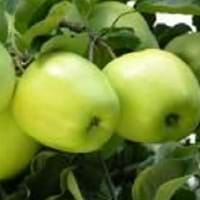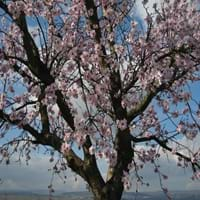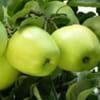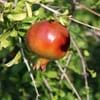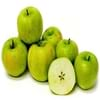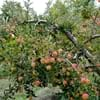Life Span
Annual
Perennial
Origin
Eastern Europe, Southern Europe, Russia/Siberia, Southern Asia, Western Asia
Northern Africa, Western Asia
Types
Jonathan apple, fuji apple
Bitter Almonds, Chinese Almonds, Green Almonds
Number of Varieties
Not Available
Habitat
Cold Regions, gardens
Dappled Shade, Sunny Edge, Woodland Garden Secondary
USDA Hardiness Zone
4-8
5-8
Sunset Zone
1a, 1b, 2a, 2b, 3a, 3b, 4, 5, 6, 7, 8, 9, 14, 15, 16
2b, 3b, 8, 9, 10, 12, 13, 14, 15, 16, 19, 20, 21
Habit
Oval or Rounded
Oval or Rounded
Flower Color
White, Pink
White, Light Pink
Flower Color Modifier
Bicolor
Bicolor
Fruit Color
Yellow, Yellow green
Green
Leaf Color in Spring
Green
Light Green
Leaf Color in Summer
Green
Light Green
Leaf Color in Fall
Green, Light Yellow, Brown
Light Green, Yellow green
Leaf Color in Winter
Light Green
Light Green
Leaf Shape
Oval
Egg-shaped
Plant Season
Spring, Fall
Spring, Fall
Sunlight
Full Sun, Partial Sun, Partial shade
Full Sun
Growth Rate
Medium
Medium
Type of Soil
Clay, Loam, Sand
Loam, Sand
The pH of Soil
Acidic, Neutral
Neutral
Soil Drainage
Well drained
Well drained
Bloom Time
Early Spring, Spring
Early Spring, Spring, Late Winter
Tolerances
Rocky Soil, Shade areas
Drought
Where to Plant?
Ground
Container
How to Plant?
Grafting, Seedlings, Stem Planting
Budding, Grafting
Plant Maintenance
Medium
Medium
Watering Requirements
Do not let dry out between waterings, Never Over-water, Use Mulches to help prevent water loss during hot and windy weather
Do Not over Water, Water Deeply
In Summer
Alternate Days
Lots of watering
In Spring
Moderate
Moderate
In Winter
Less Watering
Average Water
Soil pH
Acidic, Neutral
Neutral
Soil Type
Clay, Loam, Sand
Loam, Sand
Soil Drainage Capacity
Well drained
Well drained
Sun Exposure
Full Sun, Partial Sun, Partial shade
Full Sun
Pruning
Prune central stem, Remove lateral branches
Heading cuts, Remove damaged leaves, Remove dead branches, Remove dead leaves, Thinning
Fertilizers
Apply 10-10-10 amount, fertilize in growing season, Fertilize the soil before planting
Apply 12-12-12 amounts
Pests and Diseases
Bacterial Blight, Bacterial Canker, Leaf rust, Red blotch, Ring Rot, Woodpecker feeding
Almond brownline and decline, Almond kernel shrivel, Alternaria Leaf Spot, Hull rot
Plant Tolerance
Rocky Soil, Shade areas
Drought
Flower Petal Number
Single
Not Available
Foliage Texture
Medium
Medium
Foliage Sheen
Matte
Matte
Attracts
Bees, Butterflies, Hummingbirds, Insects
Insects
Allergy
Peripheral Edema, Vomiting
Diarrhea, Mild Allergen, Nausea, Swelling in mouth
Aesthetic Uses
Cottage Garden, Showy Purposes
Beautification
Beauty Benefits
Acne, For treating wrinkles, Improve skin tone, Moisturizing, Stops hair loss
Acne, Blackheads, Good for skin, Moisturizing, Prevents greying of hair
Environmental Uses
Food for animals, Shadow Tree, soil stabilisation, Windbreak
Air purification
Medicinal Uses
Acne, Alzheimer’s Disease, Anemia, constipation, Gastrointestinal disorders, Hair Loss, Parkinson
Antiemetic, Antitumor, Emollient, Nutritive, Pectoral
Part of Plant Used
Fruits
Seeds, Stem
Other Uses
Acts as a natural source of rain water for birds and insects., Cosmetics, Used As Food
Blended with water to make almond milk, Oil is used for aromatherapy, Used for making dark grey to green dye, Used for producing cooking oil
Used As Indoor Plant
No
No
Used As Outdoor Plant
Yes
Yes
Garden Design
Edible, Feature Plant, Fruit / Fruit Tree
Edible, Fruit / Fruit Tree
Botanical Name
MALUS domestica 'Ginger Gold'
PRUNUS dulcis
Common Name
Apple, Ginger Gold Apple, Yellow Eating Apple
Almond, Sweet Almond
In Hindi
सुनहरा सेब
मीठा बादाम
In German
goldener Apfel
Süße Mandel
In French
pomme d'Or
Amande douce
In Spanish
manzana dorada
Almendra dulce
In Greek
χρυσό μήλο
Sweet Almond
In Portuguese
maçã Dourada
Amêndoas doces
In Polish
złote jabłko
słodkich migdałów
In Latin
aureum pomum
Almond Pulchra
Phylum
Magnoliophyta
Magnoliophyta
Class
Magnoliopsida
Magnoliopsida
Clade
Dicotyledonous, Rosids
Angiosperms, Eudicots, Rosids
Tribe
Not Available
Amygdaleae
Subfamily
Not Available
Amygdaloideae
Number of Species
Not Available
Not Available
Season and Care of Ginger Gold Apple and Sweet Almond
Season and care of Ginger Gold Apple and Sweet Almond is important to know. While considering everything about Ginger Gold Apple and Sweet Almond Care, growing season is an essential factor. Ginger Gold Apple season is Spring and Fall and Sweet Almond season is Spring and Fall. The type of soil for Ginger Gold Apple is Clay, Loam, Sand and for Sweet Almond is Loam, Sand while the PH of soil for Ginger Gold Apple is Acidic, Neutral and for Sweet Almond is Neutral.
Ginger Gold Apple and Sweet Almond Physical Information
Ginger Gold Apple and Sweet Almond physical information is very important for comparison. Ginger Gold Apple height is 370.00 cm and width 460.00 cm whereas Sweet Almond height is 760.00 cm and width 760.00 cm. The color specification of Ginger Gold Apple and Sweet Almond are as follows:
Ginger Gold Apple flower color: White and Pink
Ginger Gold Apple leaf color: Green
Sweet Almond flower color: White and Light Pink
- Sweet Almond leaf color: Light Green
Care of Ginger Gold Apple and Sweet Almond
Care of Ginger Gold Apple and Sweet Almond include pruning, fertilizers, watering etc. Ginger Gold Apple pruning is done Prune central stem and Remove lateral branches and Sweet Almond pruning is done Heading cuts, Remove damaged leaves, Remove dead branches, Remove dead leaves and Thinning. In summer Ginger Gold Apple needs Alternate Days and in winter, it needs Less Watering. Whereas, in summer Sweet Almond needs Lots of watering and in winter, it needs Average Water.
